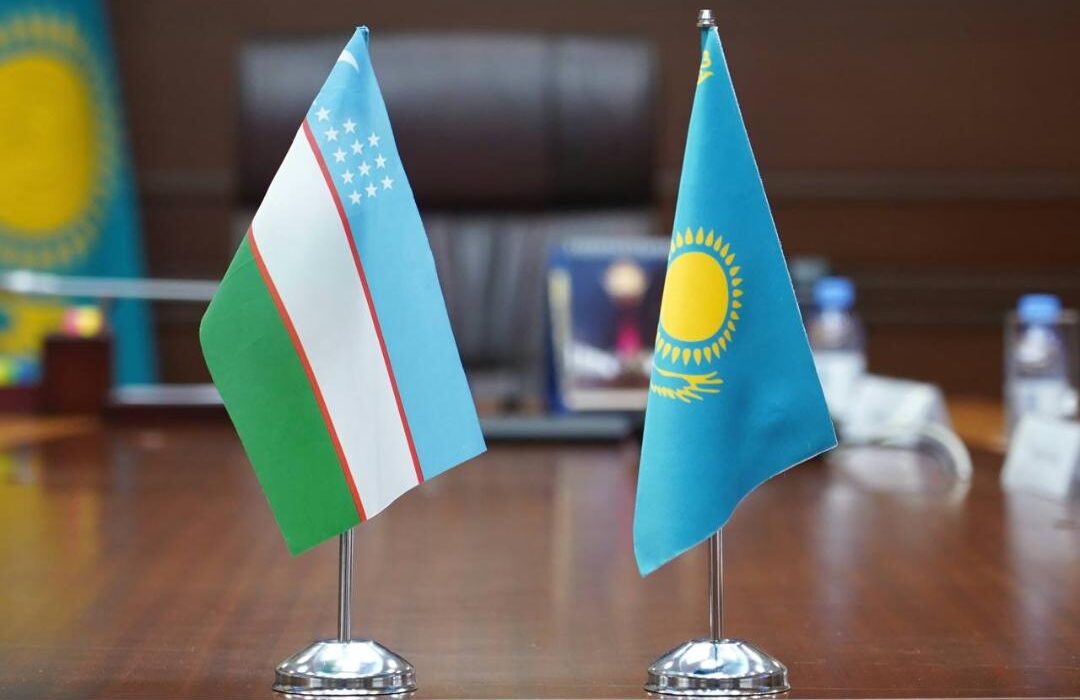In the recent time, there is an increasing number of materials dedicated to Uzbekistan in Kazakhstan’s information space and social media. Such publications focus on political and economic reforms, social initiatives and achievements in Uzbekistan, forming a stable perception of this country as a dynamically developing state and an important player in regional processes. The following article by Daulet Ospanov, originally published by centralmedia24.kz, analyzes what’s behind that media coverage.
Kazakhstan’s excessive attention to Uzbekistan has caused a variety of responses on the Internet. Some perceive it as a positive example for the mutual exchange of experience and the development of healthy competition, while others consider it as a manifestation of excessive influence on the information agenda within Kazakhstan.
Work on forming a positive image of Uzbekistan in Kazakhstan’s media is being carried out in different directions. These include cultural initiatives – films, exhibitions, public events – aimed at a broader audience; media content – articles, reports, analytical materials; as well as activity in Telegram channels, with special attention to economic and political issues.
One such example is the Uzbek feature film “The Emir of Samarkand,” released in 2024 and dedicated to Zhalantos Bahadur, a key figure of the 17th century.
The film was created on the initiative of Uzbek President Shavkat Mirziyoyev and was positioned as a large-scale historical movie that was supposed to remind the viewer of the importance of Central Asia in world history and the role of certain individuals.
The film did not receive a wide public response except for a controversy regarding the distorted image of the Kazakh khans and the Kazakh Khanate in general. Kazakhstan’s social media audience was outraged by the scene in which the Kazakh khan thanks the emir and declares that “Uzbeks are the older brothers of the Kazakhs.”
As film critic Sergei Kravchenko wrote in his review, the film should not be perceived as historical in the documentary sense. He emphasized: “Since the film was created on the initiative and with the money of the Uzbek authorities, its authors could afford a lot.”
There is an increasing number of positive publications about the achievements and reforms in Uzbekistan in Kazakhstan’s media. Kazakh news outlets regularly report about poverty reduction, the development of vocational education, and the work of government officials in the neighboring country. Such publications emphasize the social successes of Uzbekistan and form a stable positive image of the country among the Kazakhstani audience.
In addition, a number of Telegram channels purposefully form a positive image of the country in the eyes of the Kazakhstani readers.
Blogger Murat Daniyar, the author of the YouTube channel “Zhurttyn Balasy,” also devoted one of the episodes to the Uzbek-Kazakh topic, or rather, to exposing the hype around it. The video entitled “Kazakhstan vs. Uzbekistan: who is the leader in Central Asia?” was released in August 2025.
“Uzbekistan is spending hundreds of millions of tenge into PR of the country in Kazakhstan. It buys advertising on both official media and various social media, showing off successes of the country,” Daniyar said.
After Shavkat Mirziyoyev came to power, Uzbekistan opened foreign trade and began to develop tourism. However, according to the blogger, in terms of GDP, the average Kazakh citizen is “still five times richer than an Uzbek citizen.”
“If Kazakhstan’s economy stands still, Uzbekistan would only catch up with us in 15 years, by 2040. If Kazakhstan grows at least 3% per year, Uzbekistan would only be able to catch up with us by 2056,” Daniyar emphasized.
The blogger does not see anything bad in the growth of Uzbekistan’s economy. He notes that the stability of the neighboring state is a platform for Kazakhstan’s business to enter a new market.
“That is why Uzbekistan spends millions to highlight its successes in the information space of Kazakhstan — so that businessmen pay attention, and ordinary residents come there as tourists. This is called PR of the country,” the blogger concludes.
In early 2020, the Ministry of Justice of Uzbekistan registered the Public Fund for the Support and Development of National Mass Media. Saida Mirziyoyeva, the president’s daughter, was appointed deputy chairperson of the fund. One of the fund’s stated goals is “promoting the further improvement of Uzbekistan’s international image”.
Political scientist Adil Seyfullin believes that Kazakhstan has no need to create artificial competition with Uzbekistan. “We do not measure our development in comparison with our neighbors. Our benchmarks are global trends, OECD (Organization for Economic Cooperation and Development) standards, technological transformation, and the green economy. The race in the media is the result of an advertising campaign by Uzbekistan’s ideological authorities,” the expert said.
Political scientist Marat Shibutov notes that this PR campaign targets mainly those who do not know statistics.
He turns to the figures which say that in 2024, Kazakhstan’s GDP was $288 billion while Uzbekistan’s was $115 billion. Shibutov also suggests looking at the figures of export. In Kazakhstan in 2023, exports totaled $90 billion, compared to $24 billion in Uzbekistan. Imports in Kazakhstan stood at $72 billion, compared to $41 billion in Uzbekistan.
“The negative trade balance is covered by remittances from labor migrants. In 2024, they amounted to $16.5 billion in Uzbekistan. What will happen to the Uzbek economy if Russia cuts its quota for Uzbek labor migrants?” the expert asks.
